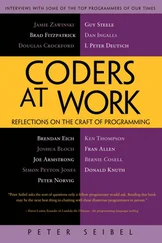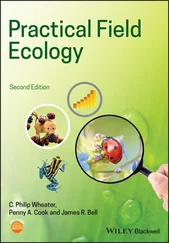Peter Siebel - Practical Common Lisp
Здесь есть возможность читать онлайн «Peter Siebel - Practical Common Lisp» весь текст электронной книги совершенно бесплатно (целиком полную версию без сокращений). В некоторых случаях можно слушать аудио, скачать через торрент в формате fb2 и присутствует краткое содержание. Год выпуска: 2005, ISBN: 2005, Издательство: Apress, Жанр: Программирование, на английском языке. Описание произведения, (предисловие) а так же отзывы посетителей доступны на портале библиотеки ЛибКат.
- Название:Practical Common Lisp
- Автор:
- Издательство:Apress
- Жанр:
- Год:2005
- ISBN:1-59059-239-5
- Рейтинг книги:4 / 5. Голосов: 1
-
Избранное:Добавить в избранное
- Отзывы:
-
Ваша оценка:
- 80
- 1
- 2
- 3
- 4
- 5
Practical Common Lisp: краткое содержание, описание и аннотация
Предлагаем к чтению аннотацию, описание, краткое содержание или предисловие (зависит от того, что написал сам автор книги «Practical Common Lisp»). Если вы не нашли необходимую информацию о книге — напишите в комментариях, мы постараемся отыскать её.
Practical Common Lisp — читать онлайн бесплатно полную книгу (весь текст) целиком
Ниже представлен текст книги, разбитый по страницам. Система сохранения места последней прочитанной страницы, позволяет с удобством читать онлайн бесплатно книгу «Practical Common Lisp», без необходимости каждый раз заново искать на чём Вы остановились. Поставьте закладку, и сможете в любой момент перейти на страницу, на которой закончили чтение.
Интервал:
Закладка:
311
In fact, it's probably too expressive since it can also generate all sorts of output that's not even vaguely legal HTML. Of course, that might be a feature if you need to generate HTML that's not strictly correct to compensate for buggy Web browsers. Also, it's common for language processors to accept programs that are syntactically correct and otherwise well formed that'll nonetheless provoke undefined behavior when run.
312
Well, almost every tag. Certain tags such as IMGand BRdon't. You'll deal with those in the section "The Basic Evaluation Rule."
313
In the strict language of the Common Lisp standard, keyword symbols aren't self-evaluating , though they do, in fact, evaluate to themselves. See section 3.1.2.1.3 of the language standard or HyperSpec for a brief discussion.
314
The requirement to use objects that the Lisp reader knows how to read isn't a hard-and-fast one. Since the Lisp reader is itself customizable, you could also define a new reader-level syntax for a new kind of object. But that tends to be more trouble than it's worth.
315
Another, more purely object-oriented, approach would be to define two classes, perhaps html-pretty-printerand html-raw-printer, and then define no-op methods specialized on html-raw-printerfor the methods that should do stuff only when *pretty*is true. However, in this case, after defining all the no-op methods, you'd end up with more code, and then you'd have the hassle of making sure you created an instance of the right class at the right time. But in general, using polymorphism to replace conditionals is a good strategy.
316
You don't need a predicate for *inline-elements*since you only ever test for block and paragraph elements. I include the parameter here for completeness.
317
While XHTML requires boolean attributes to be notated with their name as the value to indicate a true value, in HTML it's also legal to simply include the name of the attribute with no value, for example,
rather than . All HTML 4.0-compatible browsers should understand both forms, but some buggy browsers understand only the no-value form for certain attributes. If you need to generate HTML for such browsers, you'll need to hack emit-attributesto emit those attributes a bit differently.318
The analogy between FOO's special operators, and macros, which I'll discuss in the next section, and Lisp's own is fairly sound. In fact, understanding how FOO's special operators and macros work may give you some insight into why Common Lisp is put together the way it is.
319
The :noescapeand :attributespecial operators must be defined as special operators because FOO determines what escapes to use at compile time, not at runtime. This allows FOO to escape literal values at compile time, which is much more efficient than having to scan all output at runtime.
320
Note that &attributesis just another symbol; there's nothing intrinsically special about names that start with &.
321
The one element of the underlying language-processing infrastructure that's not currently exposed through special operators is the indentation. If you wanted to make FOO more flexible, albeit at the cost of making its API that much more complex, you could add special operators for manipulating the underlying indenting printer. But it seems like the cost of having to explain the extra special operators would outweigh the rather small gain in expressiveness.
322
The combination of Common Lisp's read-time conditionalization and macros makes it quite feasible to develop portability libraries that do nothing but provide a common API layered over whatever API different implementations provide for facilities not specified in the language standard. The portable pathname library from Chapter 15 is an example of this kind of library, albeit to smooth over differences in interpretation of the standard rather than implementation-dependent APIs.
323
A Foreign Function Interface is basically equivalent to JNI in Java, XS in Perl, or the extension module API in Python.
324
As of this writing, the two main drawbacks of UFFI are the lack of support for callbacks from C into Lisp, which many but not all implementations' FFIs support, and the lack of support for CLISP, whose FFI is quite good but different enough from the others as to not fit easily into the UFFI model.
325
Knuth has used the saying several times in publications, including in his 1974 ACM Turing Award paper, "Computer Programming as an Art," and in his paper "Structured Programs with goto Statements." In his paper "The Errors of TeX," he attributes the saying to C.A.R. Hoare. And Hoare, in an 2004 e-mail to Hans Genwitz of phobia.com, said he didn't remember the origin of the saying but that he might have attributed it to Dijkstra.
326
CL-PPCRE also takes advantage of another Common Lisp feature I haven't discussed, compiler macros . A compiler macro is a special kind of macro that's given a chance to optimize calls to a specific function by transforming calls to that function into more efficient code. CL-PPCRE defines compiler macros for its functions that take regular expression arguments. The compiler macros optimize calls to those functions in which the regular expression is a constant value by parsing the regular expression at compile time rather than leaving it to be done at runtime. Look up DEFINE-COMPILER-MACRO in your favorite Common Lisp reference for more information about compiler macros.
327
The word premature in "premature optimization" can pretty much be defined as "before profiling." Remember that even if you can speed up a piece of code to the point where it takes literally no time to run, you'll still speed up your program only by whatever percentage of time it spent in that piece of code.
328
Declarations can appear in most forms that introduce new variables, such as LET , LET* , and the DO family of looping macros. LOOP has its own syntax for declaring the types of loop variables. The special operator LOCALLY , mentioned in Chapter 20, does nothing but create a scope in which you can make declarations.
329
The FASL files produced by COMPILE-FILE are implementation dependent and may or may not be compatible between different versions of the same Common Lisp implementation. Thus, they're not a very good way to distribute Lisp code. The one time they can be handy is as a way of providing patches to be applied to an application running in a known version of a particular implementation. Applying the patch simply entails LOAD ing the FASL, and because a FASL can contain arbitrary code, it can be used to upgrade existing data as well as to provide new code definitions.
330
ASDF was originally written by Daniel Barlow, one of the SBCL developers, and has been included as part of SBCL for a long time and also distributed as a stand-alone library. It has recently been adopted and included in other implementations such as OpenMCL and Allegro.
Читать дальшеИнтервал:
Закладка:
Похожие книги на «Practical Common Lisp»
Представляем Вашему вниманию похожие книги на «Practical Common Lisp» списком для выбора. Мы отобрали схожую по названию и смыслу литературу в надежде предоставить читателям больше вариантов отыскать новые, интересные, ещё непрочитанные произведения.
Обсуждение, отзывы о книге «Practical Common Lisp» и просто собственные мнения читателей. Оставьте ваши комментарии, напишите, что Вы думаете о произведении, его смысле или главных героях. Укажите что конкретно понравилось, а что нет, и почему Вы так считаете.








